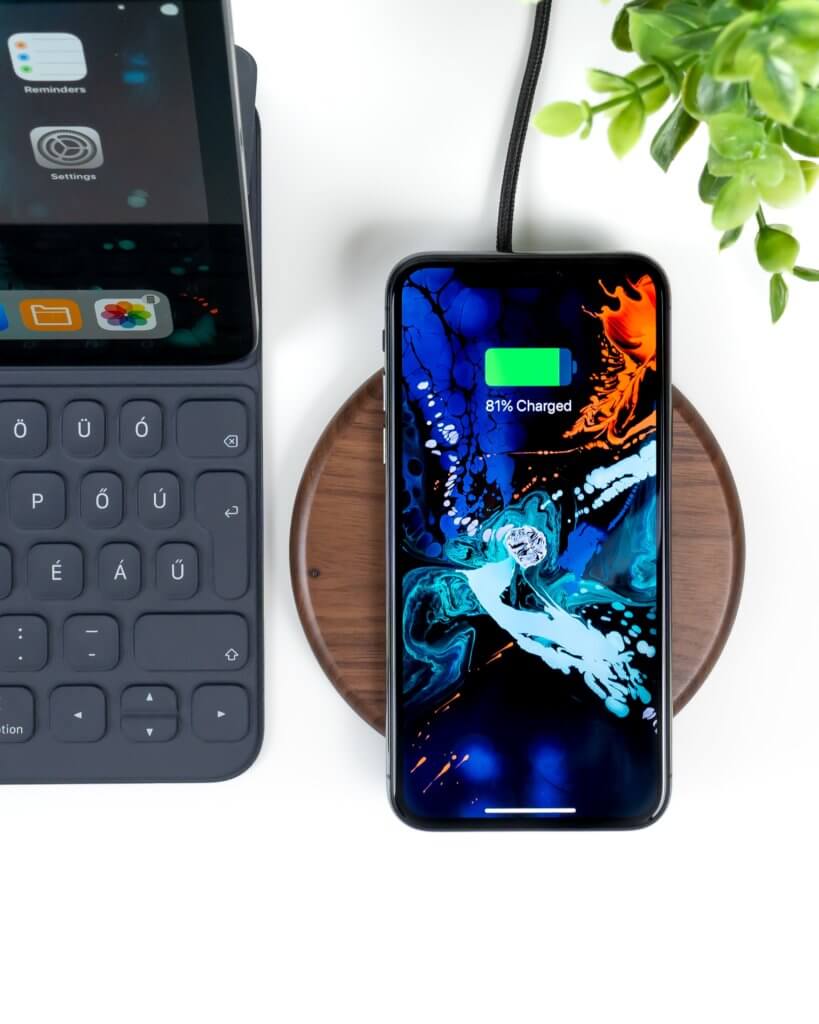
Are Wireless Chargers Safe Or An EMF Concern?
Nowadays, wireless chargers are becoming increasingly popular. Although it first came into mainstream media in 2012, it has evolved fast and adopted quickly by many top smartphone manufacturers. However, like any other wireless electrical device, you might wonder are wireless chargers safe or not due to their wireless mechanics.
Wireless chargers are safe as long as you are using safe and standard chargers within the given guidelines for EMF safety. This means that your charger has to be Qi certified and you are following safety rules like not sleeping next to it, keeping it out of your room, and others.
To have a clear concept about wireless charging and its EMF risks, you need to have an idea about EMF radiation and how wireless charging works. I will explain both of those in this article. I will also talk about how to mitigate the risks of EMF radiation. Lastly, I will add some tips on how to choose the best wireless charger for your device.
What is Qi Certification?
Wireless Power Consortium or WPC developed the Qi standard which is a wireless charging standard. It was first released in 2008.
Major Smartphone manufacturers like Apple, Samsung have adopted the Qi wireless charging standard. Qi charging uses an inductive charging technique that requires close contact and also uses a low-frequency oscillating field. This ensures efficient charging and safety from the effects of EMF.
It supports three different power outputs of 5 watts, 7.5 watts and 10 watts. There are other competing standards of wireless charging, but the Qi standard is by far the most efficient.
Why You Should Be Concerned About EMF Radiation?
Wireless devices are increasing day by day in our households. This is a concern because wireless devices emit both EMF radiation and radiofrequency of the electromagnetic spectrum. This can be especially harmful to you if you’re not careful.
Electromagnetic field radiation is pretty self-explanatory. When electricity runs through any conductor, it generates a magnetic field. The range and strength of the magnetic field depend on the voltage of the electricity. Even when there is no current flowing, EMF radiation can still be emitted.
EMF radiation can be both man-made and natural. When electric charges gather up before a thunderstorm, it produces an electromagnetic field. Also, the earth automatically generates a magnetic field. Based on this magnetic field, compasses are made. Birds use the earth’s magnetic field for navigation.
However, the real concern is man-made sources of EMF because they are increasing day by day. Cell phone towers, electricity towers, Wi-Fi routers all generate a hefty amount of EMF radiation. The fear factor is that we live pretty close to all these sources of EMF which can be detrimental to our health.
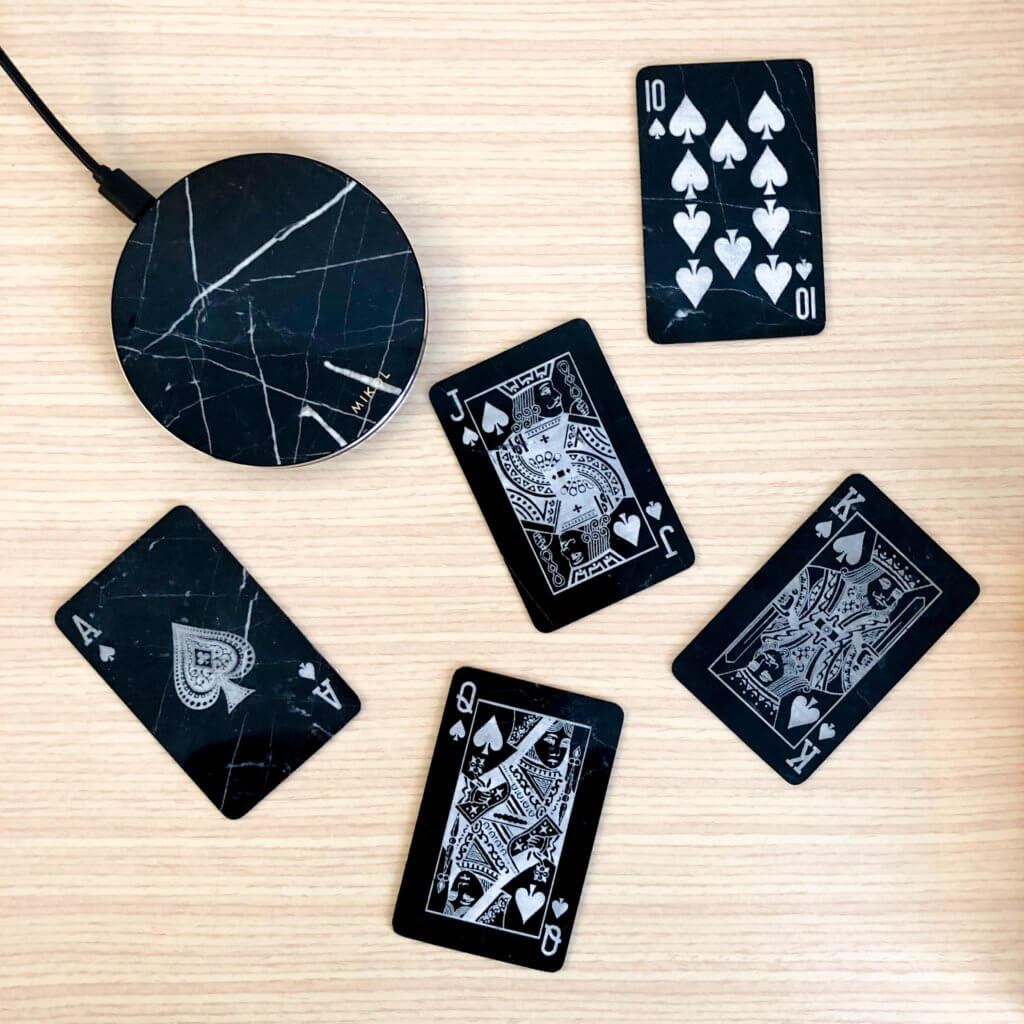
Some risks of exposure to high levels of EMF radiation includes:
- Insomnia
- Dizziness
- Headache
- Memory issues
- Altered brain function
- Cancer etc.
To learn more about the harmful effect of large volume EMF radiation check out this article on the concerns of EMF from Healthline.
How Does a Wireless Charger Work?

Wireless charging works using a special type of technology. This involves two components called receiver coil and transmitter coil. The transmitter coil is a part of the wireless charger and the receiver coil is a special device placed in the mobile phone.
When you connect the wireless charger to a power outlet, electricity flows through the transmitter coil. This generates an electromagnetic field surrounding the coil. The more rounds of coil per unit length, the more powerful the electromagnetic field.
When the cellphone is placed within the proximity of the electromagnetic field, the receiver coil inside the phone comes into play. It intercepts the magnetic field and the electrons within the receiver coil receive kinetic energy. Then the electrons start to flow and generate electricity.
Note that the electromagnetic field generated by the transfer coil is very short range, which means you need to place the mobile phone very close to the charger. In reality, you have to place the phone on a wireless charging pad. So technically it is wireless, but not contactless. This means you cannot use your phone as you do with wireless headphones, controllers, etc.
There are three types of wireless charging. They are magnetic induction charging, resonant charging, and radiofrequency wireless charging. I will discuss them briefly because each of them has different EMF threats.
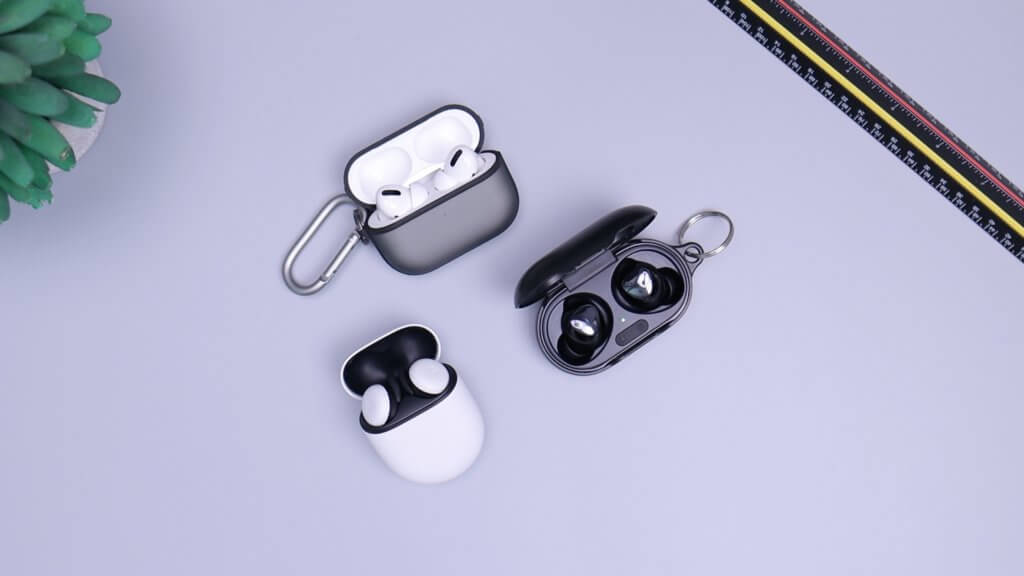
- Magnetic Induction Charging
Magnetic induction charging is the one I’ve just described above. When electricity passes through the transmitter coil, the receiver coil placed near it receives an electrical charge from it and charges the battery.
The frequency of the oscillating field is around 100 to 250 kHz. It is much lower than resonant charging. Its benefit is that it has very high efficiency. The only downside is that the two devices need to be very closely attached.
- Resonant Charging
Resonant charging is the same as inductive charging. The difference is that it uses a high-frequency oscillating magnetic field to transfer electrical energy. The frequency is about 6 MHz. Its advantage is that you can charge your phone from a distance but it has a drawback as well. Its efficiency is very low so the charging time is long.
- Radiofrequency Wireless Charging
This technology isn’t available commercially yet. This promising technology is still being tested. In this technology, the device to be charged is exposed to a high level of radiofrequency. A specialized apparatus inside the device converts the energy to electricity, hence charging the device.
Are Wireless Chargers An EMF Concern?
Any electrical device is a source of EMF. Wireless devices pose even more threats. Although the direct effects of EMF have not been established yet. It is becoming clearer every day that whatever the effect of EMF is, it is not good.
We have been using wireless devices for the last few decades. The usage is increasing constantly. Wireless charging technology is still relatively new, but it is being implemented in more and more places every day. So, it only makes sense the growing concerns about EMF radiation of wireless charging.
Wireless charging technology only generates a magnetic field whereas other wireless devices like Wi-Fi routers, headphones, etc. emit both radiofrequency and EMF radiation. This makes wireless chargers a safer option.
Another fact is that wireless chargers have a very short range, unlike Wi-Fi routers or cellphone towers. So, unless you are sleeping right next to it, you should be safe. Most wireless chargers use Qi protocol which is the gold standard of wireless charging technology. I will discuss Qi in the latter portion of this article.
The standard Qi charger, when charging a device, emits around 3 milligauss energy which is negligible for human health concerns. However, other wireless chargers that use resonant or radiofrequency wireless charging emit much higher energy. That’s the reason why these technologies are still not available to the public yet.
To compare our day-to-day exposure, 3 milligauss is pretty low. Distance is the key to stay safe from EMF radiation. Don’t put the wireless charger right next to you when sleeping, use Qi-standard wireless charging device and you are all good, at least in the current state of this technology. I cannot say the same for the future of this technology though.
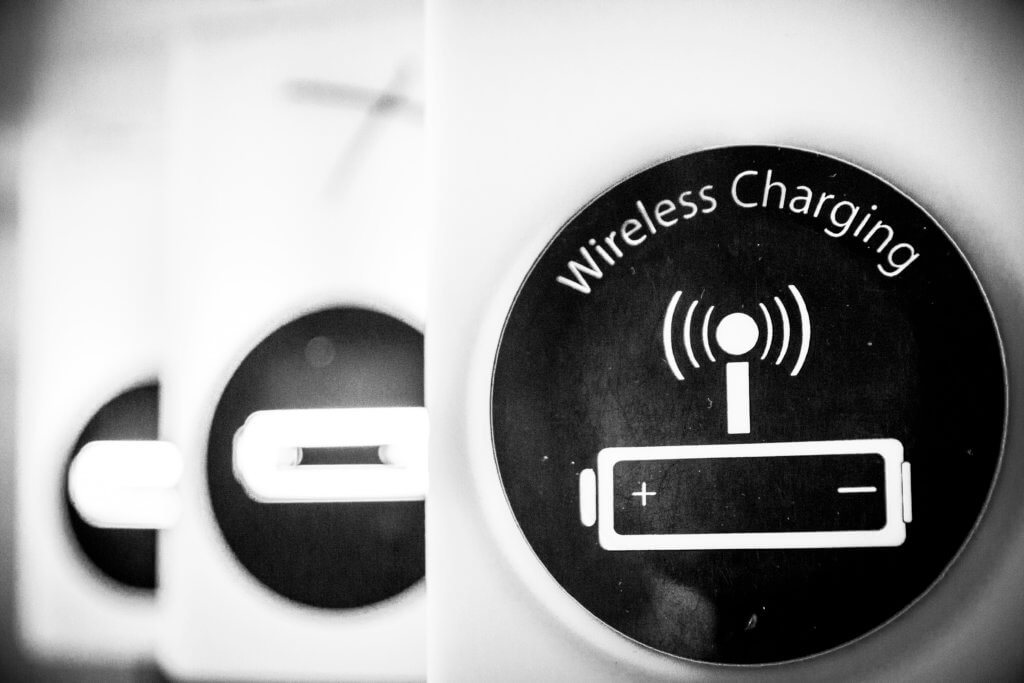
What Should you Do to Lower the Risks of EMF Radiation?
It’s no wonder that you would want to use a wireless charger if your device supports it because why not. It makes the whole procedure way easier. It already isn’t much of a risk to human health. There are ways you can adopt to reduce the risks even lower. Here’s how:
- Do not keep the charger next to you when sleeping. I can bet that 99% of us keep our phone next to our heads when sleeping. Some even put it to charge to have a fully charged phone in the morning. Avoid this habit if you are using wireless charging. Because I have already mentioned, distance is the key to safety from EMF radiation.
- If possible, keep the charger out of your bedroom. This will ensure even more distance. When using a wireless charger, you cannot use the phone as conveniently as you can when using corded chargers. So, there’s no point in keeping the phone close to you. Better keep it out of the room for the safety of you and your family.
- Another measure you can take is maintaining distance among all the wireless devices. If you put the devices apart from each other, the overall emission per unit area of your house shall be lower. So, place them at as much distance as possible.
- Lastly, the best way to mitigate the exposure is using corded chargers. We are already using tons of wireless devices every day. We are in such a state that every other device we are using is irreplaceable. So, adding another to the herd shall just result in increased exposure.
- Keeping your charger inside a faraday bag can help with blocking all that radiation.
Choosing A Wireless Charger (For the EMF Concerned)
If you are looking to buy a wireless charger and it is your first time, there are things to know about as always. You cannot just go to a shop and buy any random wireless phone charger and expect everything to be right.
Here is how to choose the right wireless charger for your device:
Brand
Choosing the right brand shouldn’t be difficult because there aren’t thousands of other third-party brands producing wireless chargers. Every mobile phone manufacturer has their own wireless charging device.
Chargers from the same brand can have compatibility issues because of the wattage difference which we will get into next. The bottom line is that any wireless charger of any brand will do the job, but it is always better to purchase first-party products.
It will gain you some extra benefits like charging stands for Google Pixel phones shall turn your phone into a temporary alarm clock. Branded devices also come with premium quality parts and adhere much more to health regulations. So, they are less likely to emit dangerous levels of EMF.

Wattage
Wattage can seem like a big issue if you don’t know the ins and outs of it. Chargers can be of higher wattage than that is supported by the phone. For example, Google Pixel 3’s wired charger is an 18-watt charger whereas the current highest charging capacity supported by Qi technology is 10 watts.
So, you might ask, what will a 10 watts wireless charger do for Google pixel 3? If your device supports it, then you can go higher. There’s no problem in getting a charger of higher watts than supported by your phone. The point is, you can always go higher than what your phone supports. It won’t cause any issue with your phone.
But higher wattage means more radiation. So, you have to do a little trade off here. Do you go for faster charging and reduced exposure time, risking more exposure volume? Or are you okay with slow charging and long periods of exposure for low total EMF exposure.
This study is actually more in favor of the latter. Chronic low volume EMF exposure would generally cause much more delayed effects and many preliminary effects before causing life threatening issues. So, if your charger ever ends up affecting your body, lower wattage ones will surely allow much more time for you to be treated.

Safety Standards
Look for signs of safety standards maintained by the manufacturers. This will ensure that the manufacturers adhere to the legal safety measures. The safety standards ensure the charger follows standards for safe levels of radiation emission and the manufacturers have produced it using non-hazardous materials.
Each country has its safety standards for wireless chargers, but the most common certifications include FCC, BSMI and KC.
If you are looking for suggestions, we would recommend getting the Anker wireless charger. It is a Qi-certified 10-watt wireless charger. It supports flagship devices like iPhone 12, 12 Mini, 12 Pro Max, SE 2020, 11, 11 Pro and Galaxy S20. You can select different watt which means this charger has universal compatibility. It can also charge through a phone case which is a great feature to have.
Conclusion
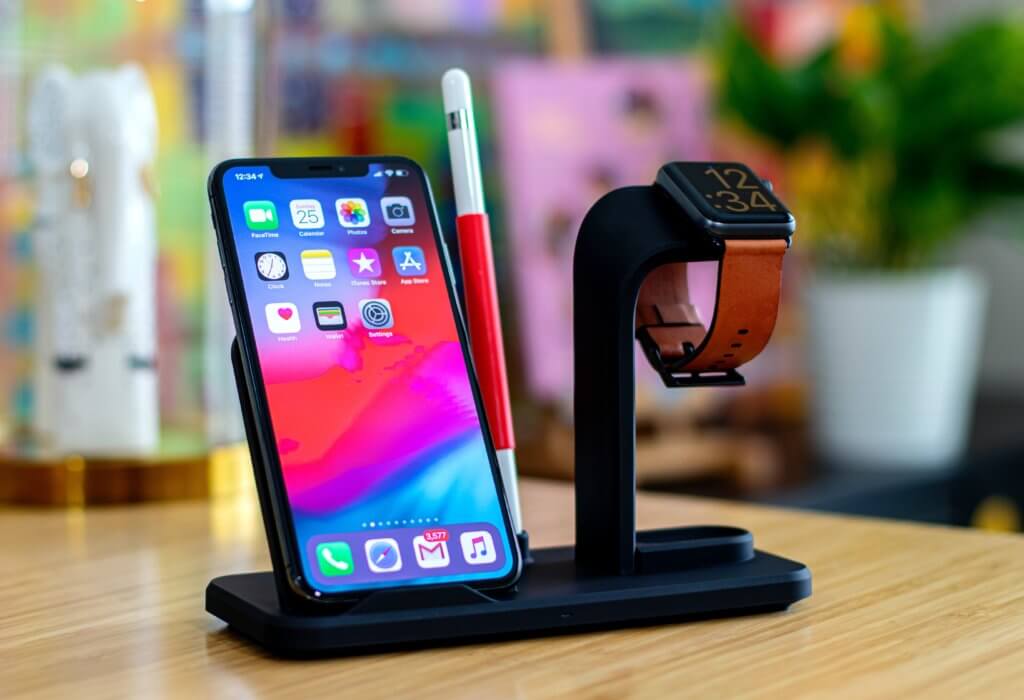
Wireless charging is very convenient. You won’t have to search tirelessly in the dark for that tiny charging hole. You can place your phone on top of the charging pad and forget about it. Wireless charging technology is becoming affordable and available fast, so it only makes sense that its usage is skyrocketing at the consumer level.
What many people don’t think a second time, are wireless chargers safe or not. Wireless chargers also pose risks of EMF radiation. The factors that influence the harms of radiation are very important to know. In this article, I have explained all of it to provide you with an overview of the EMF status of wireless chargers. Have a great day!